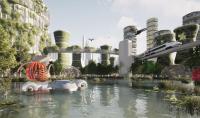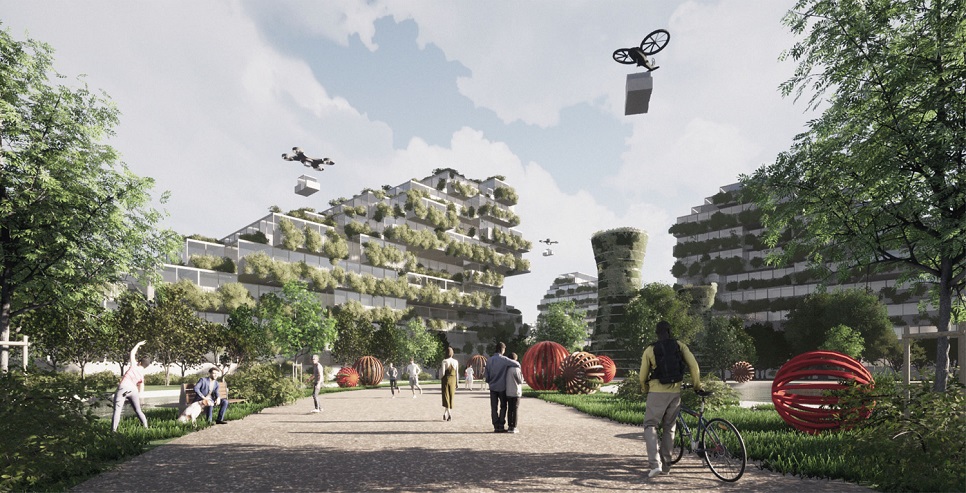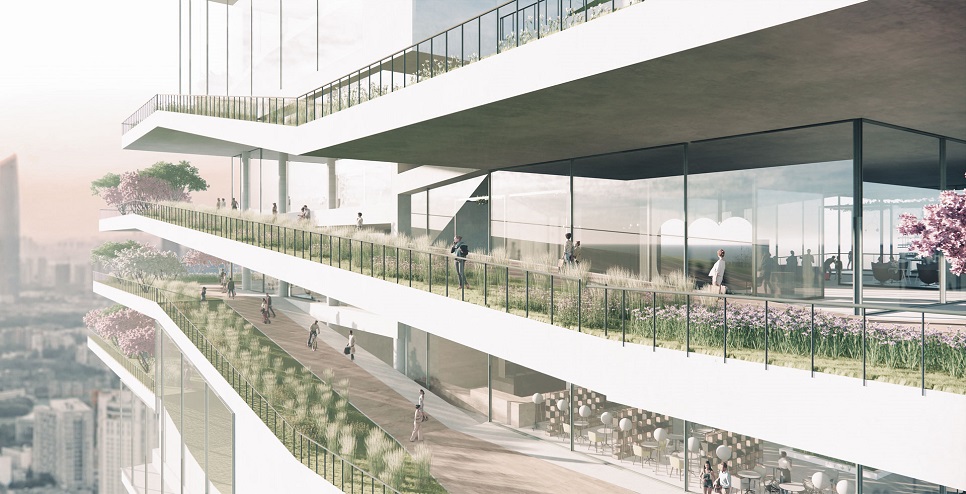Polish cities of the future through the eyes of students

Cities in 2050 are mainly green and well-connected, visualization prepared by the Scientific Circle of Architecture of Tomorrow at the WUT
Self-sustaining and ecological, with a happy and integrated community – this is how future architects and urban planners see Polish cities in 2050. Members of the Scientific Circle of Architecture of Tomorrow at WUT have shared their vision.
What do we want the cities to look like in 2050? – such a question was posed by students from scientific circles from three universities: AD FUTURUM at the University of Warsaw, Ecosystem at the Silesian University of Technology and Architecture of Tomorrow at the Warsaw University of Technology. They have developed a common vision, and suggested how small steps can be taken to gradually approach it.
– The common scenario we have developed is a proposal for the path that we can follow – towards a better tomorrow. We are well aware that the topic of cities of the future has not yet been exhausted and there are many other aspects to work through. It is our academic perspective on the issue of shaping the cities of the future, which can undoubtedly be a kind of introduction to further considerations – says Michał Skowroński, the President of the Scientific Circle of Architecture of Tomorrow.
In a few decades, cities are supposed to manage scarce resources efficiently and be self-sufficient. Autonomous transport powered by renewable energy sources and a responsible approach to construction will reduce greenhouse gas emissions and pollution.
The concept of a sponge city, which assumes the use of infrastructure for water management through its retention, storage and release when it is needed, is to become realistic.
In the future, life will move closer to city centres, and the "spillage" of their buildings into the suburbs will be systematically limited. The vision also includes the idea of 15-minute cities, providing access to necessary services near the place of residence.
And what about the people? Their satisfaction is to be a showcase of the cities of the future. It will be influenced by developed social ties, which will ensure large amounts of urban greenery and commonly accessible neighborhood integration spaces.
– You might very well say that it is us - young specialists - who are currently shaping the space for ourselves and for our children. The report is the first step that will allow us to expand our wings and continue our search for a vision for tomorrow. A step that will allow for the conscious implementation of our ideas – emphasizes Michał Skowroński.
Michał Skowroński, Kinga Batte, Martyna Podrażka, Gabriela Bolisęga, Dominika Dołębska, Nina Kamińska, Karolina Słomiany, Magda Niewczas and Adrianna Kowalczyk from the Scientific Circle of Architecture of Tomorrow at the WUT participated in the development of the vision "Polish cities of the future 2050 through the eyes of young people”. It is a response to a report published in December 2021 at the initiative of the Saint-Gobain Group, the Society for Future Studies and 4CF.








